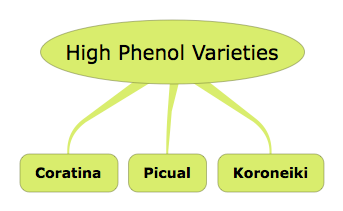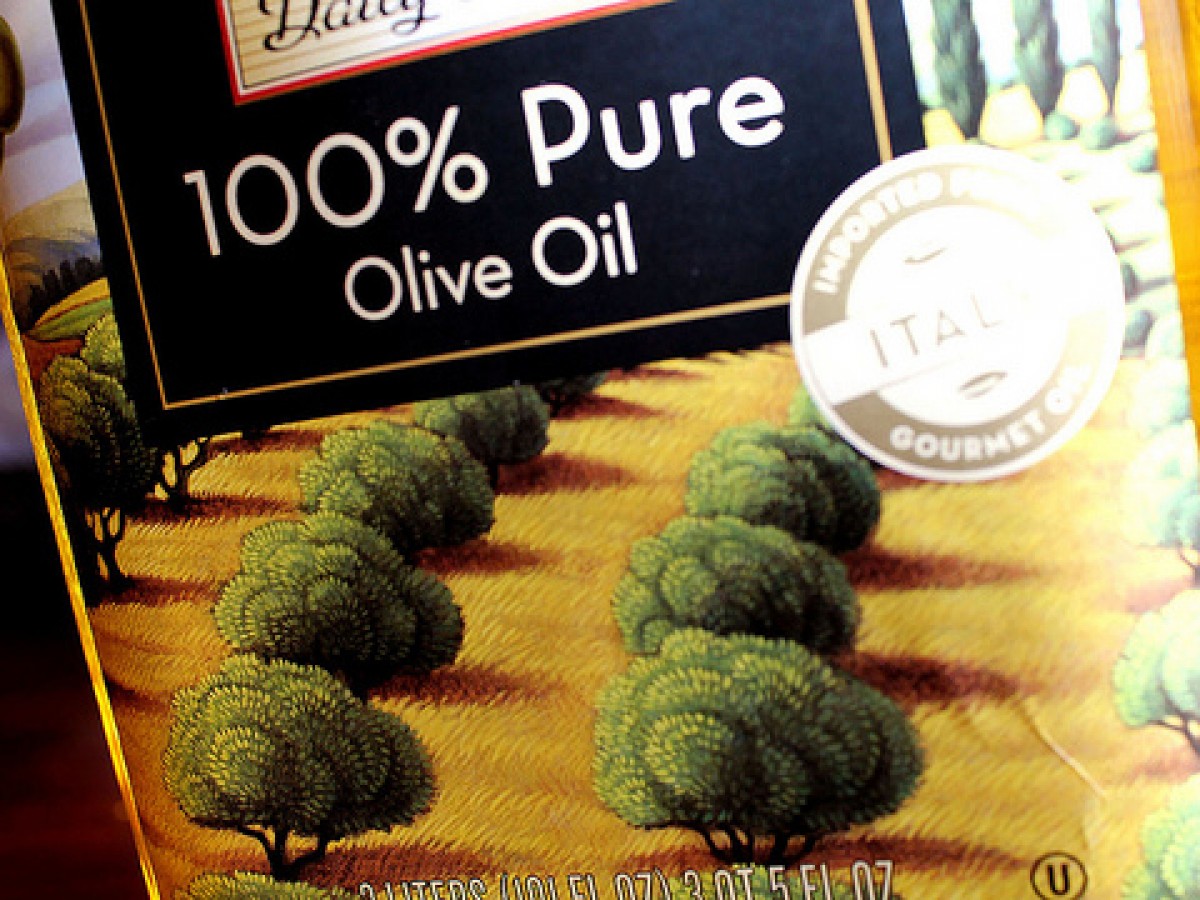Why Italians Don't Use Italian Dressing.
Deep in the Valley of Mazara, Sicily is an ancient farm that will make your mouth water and your heart yearn for simpler times.
Unfortunately I've never been there, except as a voyeur through Google Earth. However, as luck would have it, my Italian friend Davide has been there. His family owns the farm.
And I finally got a taste of the place.
Last year, Davide gifted me a sample of his family's secret stash Extra Virgin Olive Oil. He smuggled it to me one day at work, carefully concealed in a paper bag as if it were fine wine. I unsheathed it and was greeted by the sight of a dark nectar, cloudy with particulates--a very good sign. The taste experience was thick and pleasurable with high spicy notes, low nutty tones, and everything in between. If I were a synesthete, I'd say it was like swallowing velvet with sparkles on top.
"We don't have Italian dressing in Italy," says Davide. "...I don't know what they are talking about."
Since opening the bottle, it's been in constant use at our house. Everything tastes better with this oil, everything. Grilled fish tastes more like fish without being fishy. Cold chicken tastes more like chicken without tasting like leftovers. And of course the flavor of every imaginable veggie is italicized in ways I can't really describe.
"We don't have Italian dressing in Italy," says Davide. "You go into American stores and I don't know what they are talking about. In Italy we just put on fresh olive oil, a squeeze of lemon, sea salt, and fresh ground pepper. That's it. That's Italian."
Thank you Davide. I think I'm beginning to understand that there is olive oil, and then there is olive oil.
Tasting What's Good for You.
It turns out that the peppery finish of Davide's olive oil is a clue to its health benefits. What I tasted when the sparkles hit my tongue were a million tiny molecules known as polyphenols.
Phenols are volatile compounds that can seem, at first glance, to be almost magical. When they enter the body they do everything right, without being told. In fact, the combined effect of phenols + monounsaturated fat makes Extra Virgin Olive Oil a sort of elixir. It's like a super-medicine that gets to the root of several chronic diseases at once, lowering inflammation, lubricating the blood, raising HDL, calming down angry cell chatter, and reducing the risk of heart attack, stroke, diabetes, cancer, and chronic pain--all at the same time.
Imagine if I told you there was a pill that could do all that. How much would you pay for it? How much would Wall Street pay for it? I know quality olive oil may seem expensive, but it costs pennies on the dollar compared to what a pharmaceutical company would charge you for the same thing--if they could put it in a pill. Maybe they will put it in a pill. Don't let it come to that. Let food by thy medicine.
The Finer Points.
There are 36 different phenols in good quality extra virgin olive oil, along with 2 lignans, pinoresinol and acetoxypinoresinol. These make up olive oil's phytonutrient backbone.
From now on, let's assume we are talking about cold-pressed, extra virgin olive oil that is dark and a little bit cloudy--not the heavily processed "light" olive oils sold to unsuspecting consumers every day in the grocery store. When it comes to olive oil, choosy omnivores choose Extra Virgin.
In a recent study published in the Annals of Internal Medicine, researches found that the higher the phenolic content of the olive oil, the lower the markers of oxidative stress and harmful lipids in the blood.
High-phenolic olive oil hits so many different human molecular targets, it's best viewed as a picture:

You've probably never heard of even half of these targets, but one in particular I want to draw to your attention is NF kappa B. This is a gene transcription factor that turns on inflammatory genes responsible for chronic firestorms throughout your body. Olive oil dials this down. Did you catch that? Olive oil actually changes your gene expression. It soothes your genome. That's deep nutrition.
So far, we know of 98 genes whose expression is altered favorably by the phenols in olive oil--genes linked to obesity, dyslipidemia, Type II diabetes, and probably more. We're living in exciting times. It's one of those back-to-the-future moments in history where we suddenly discover what mother nature has been up to all along and ask ourselves, "Can we really improve on this?"
Troubleshooting.
Okay. What's the best why to ruin a premium olive oil? Cook with it.
The phenol content of extra virgin olive oil drops by 50-60% when it is heated above 180 degrees, which is well below the smoke point (325-375 degrees).
My suggestion is to use more heat-resistant oils like pastured butter, coconut oil, or ghee to do most of your cooking and then drizzle your prize-winning olive oil on top of your food after it's been cooked. You will find it tastier that way and far more nutritious.
Another solution is to use one good quality olive oil for sautéing and another premium quality olive oil for raw dressings and dips, etc.
It may also be a good idea to consume your premium olive oil more than once a day, because its phenolic half-life in the body is relatively short--a few hours.
Your Mission, Should You Choose to Accept It.
Your mission, should you choose to accept it, is to get yourself some darn good olive oil and start using it. Be ready to pay for it. You can pay the farmer now or you can pay the doctor later.
And be ready for a punchier flavor too. Phenols have a kick.
If you want to go the extra mile, use single source olive oil from high-phenol varieties like coratina, picual, or koroneiki. Of course, always make sure your purchase is extra virgin, recently pressed (within a year), and a little cloudy.

I recommend you look for a verification seal of origin, to guarantee that you're actually getting the olive oil you think you're getting, and not some step child that has been mixed with inferior oils from somewhere else--like an exquisite Italian olive oil that has been watered down with cheap oil from Morocco. Davide says this happens all the time. For Italian sources, he recommends looking for the DOP seal, which stands for Di Origine Protetta: “of protected origin”.
How Much Should I Consume?
The typical daily olive oil intake in the Mediterranean is 25-50 ml (2-4 tablespoons). 25 ml has been effective in multiple studies.
Drizzle a little here, drizzle a little there. Now that's Italian.
Here are some shopping links to get you started:
Yours in Health and Resilience,
Marc A. Wagner, M.D., M.P.H.

Related Posts:
Cover photo credit: Olive Oil by Daniella Segura on Flikr.
References:
-
Covas MI et al. The effect of polyphenols in olive oil on heart disease risk factors: a randomized trial. Ann Intern Med 2006 Sep5;145(5): 333-41
-
Carluccio MA Arterio Throm Vasc Bio 2003; Togna GI J Nutr Biochem 2006; Ruano J Am J Clin Nutr 2007; Dell’ AM, Maschi O Br J Nutr 2008:99;945-51; Manna C J Agric Food Chem 2009; 57:3478-3482
-
Bogani P et al. Atherosclerosis 2007;190:181-6.; Leger CL et al. Eur J Clin Nutr 2005;59:727-30.; Fito M et al. Eur J Clin Nutr 2008;62:570-74.
-
Moreno JJ Free Rad Biol Med 2003;35:1073-81.; Beauchamp GK. Nature 2005:437:45-46.; St. Laurent-Thibault C et al. Curr Alz Res 2011 May
-
Antonio C et al. BMC Genomics 2010, 11:253 Gene expression changes in mononuclear cells in patients with metabolic syndrome after acute intake of phenol‐rich virgin olive oil. (Spain)
-
Weinbrenner T et al. Olive oils in phenolic compounds modulate oxidative/antioxidative status in men. J Nutr 2004 Sep;134(9):2314-21.
-
Covas MI et al. Drugs Exp Clin Res 2003;29(5-6):203-6. Covas MI Eur J Clin Nutr 2003 Jan;57(1):186-90. Covas MI et al. Clin Chem 2003 June;49(6 pt.1):945-52. Tuck Kl et al. J Nutr 2001 Jul;131(7):1993-6 Vissers MN J Nutr 2002; 132: 409-17.
-
Gómez-Alonso S et al. J Agric Food Chem.2003 Jan 29;51(3):667-72.
